
Archive: 08 Nov 2016
EVA Report – November 7th
Author: Jon Clarke
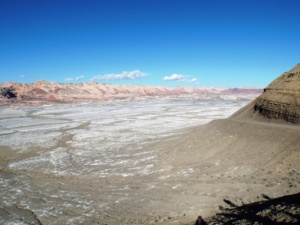
View towards San Rafael Swell
Today we completed the set of four comparison trails between suited and non-suited VAs with a suited EVA to a location past Factory Butte. We had a glorious afternoon to do our EVA in, with glorious scenery across the edge of the San Rafael Swell. This was the same area we worked in non-suited yesterday. To avoid replication I avoided sites I have documented the day before, to keep the comparison valid I worked on similar features. This was aided by the consistent geology and geomorphology.
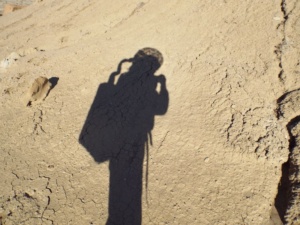
Shadow of things to come.
Our activities were documented by still photography, time-lapse photography and video by the expedition members not taking part in the EVA. The whole proceedings were masterfully supervised by our expedition Principal Investigator Shannon. Results of the EVA will need much analysis but I can make some personal observations.
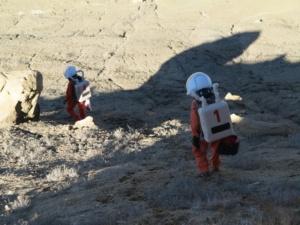
Downhill all the way.
Despite the steepness of the terrain I was able to access all the areas I had accessed unsuited, although sometimes by taking easier routes. I was able to repeat all the observations of the geology and geomorphology made the previous day, albeit taking somewhat longer. Eith these trials complete we are looking forward to recommencing the normal EVA cycle of operations the day after tomorrow when we have debriefed and processed today’s data.
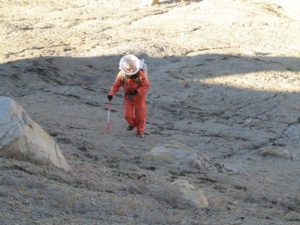
Per ardua ad Martis
Sol Summary – November 7th
Sol# 45
Person filling out report: Annalea Beattie
Summary Title: Day 4 of Science Operations Trials
Mission Status: on track
Sol Activity Summary:
This morning we continued to organise the science equipment for the laboratory, unexpectedly our German neighbours dropped in for a tour of the hab and supplies arrived, for instance, oven mitts, cooking tongs. (These kitchen things are much appreciated and make our lives less dangerous while we are cooking).
This afternoon was EVA #25, our fourth day of science operations trials in full suits in a field site that was completely stunning – sandstone cliffs towering above a shallow valley full of glittering gypsum. On the way home we stopped for a minute at Coal Mine Wash to check out the exposed coal and the weathered sandstone.
Home now, reports, pizza, reports, bed.
MDRS lessons:
1. Time flies faster in the spacesuit as you are focused.
2. Don’t forget your gloves.
Plans: process field notes and samples and debrief from our four day science operations trials.
Crew Physical Status: very well.
Weather: gorgeous day, warm with a very blue sky. Wish you were here.
Anomolies:
1. Unexpectedly our German neighbours dropped in for a tour of the hab
2. Alex found gryphea on top of an enormous boulder in a pool of mud. It’s unusual that these 150 million year old oyster shells should be found in the area of our field site. We have not seen any though we have extensively combed the area and likewise Shannon has never seen them there before and she knows the area back the front. We can only surmise that these were regurgitated by a prehistoric bird though Jon Clarke thinks someone put them there. It’s an anomoly for sure.
Crew Photo – November 7th
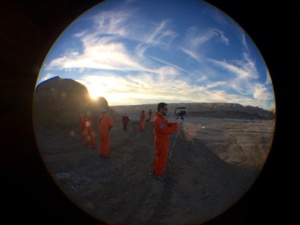
After the EVA

Annaleas drawing.
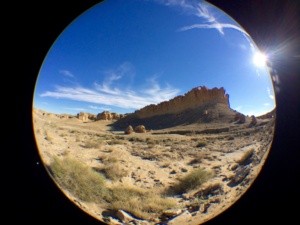
EVA site from left.
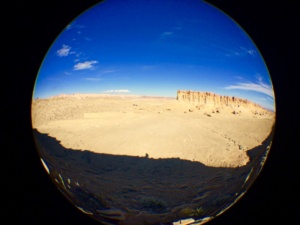
EVA site from right.
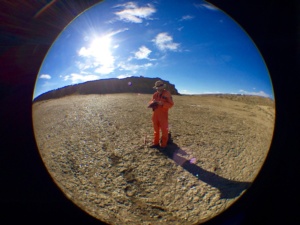
Jon’s field research.
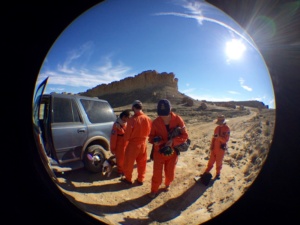
Preparing non-suit EVA
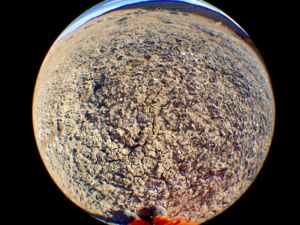
Star Valley
Journalist Report – November 7th
The letters or Martian emails
Every year Mars Desert Research Station opens its doors to the diversity of the crews in terms of research projects, countries and age. In the fall of 2016 Mars Society started first part of the unique mission Mars Desert – 80. Instead of the usual two weeks rotation our crew Mars 160 will live in simulation for 80 days.
The time flies fast here and we already halfway through of the simulation. Since the isolation is the part of our Mars Analogue mission, we communicate with the Earth by several means. To who do we write the most? Our mission support team! Every day reports on different subjects are almost the same as on International Space Station. They are divided into two parts: for public and for internal issues. For the public it can be creative reports: pictures, videos, audio records, drawings, space dictionary, the phrase of the day, journalist reports and narratives. We have a talented crew, which from time to time write stories about our packrat Jerry, “Doctor Who” style short story and even engineering narratives. For the internal issues the reports are: engineering, science, health and safety, EVA. In second place the public outreach work: Annalea Beattie publishes her in-depth articles at Space.com every week, other crew members publish their small stories on social networks and some prepare articles for National Geographic Japan and several Russian medias.
Only at third place of importance is the communication with our family and friends. Since our internet connection is very limited, no coverage for mobile phones to work. We experience almost the same delay as if it would be on Mars. No Skype, phone calls and real time communication. Just like back in the old days of new continents explorations. At first, it seemed harsh, but in reality, you actually appreciate every letter you receive from beloved ones and spend quality time to write the answer back. In this beautiful desert, we have time to pause and analyze our life, therefore transform it into a letter or a diary. In big cities this pausing moment to grasp and think are luxury. We got used to it fast and now enjoy the silence from the noisy world outside. The appreciation of the time stood still comes with each day and the beauty of the life opens with richer colors.
Science Report – November 8th
Usually fossilized sea shells are found lying on the ground. They give indication on the surrounding geological formations and their period on Earth history when they have been made.
During the dual EVA suited/unsuited experiment I found very unusual place where to find fossilized sea shells. I was walking around the boulders scattered on the East side of Valley of the Stars when I decided to climb a small one. And then I found these piece of shells on a little basin of this big rock.
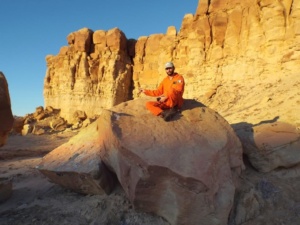
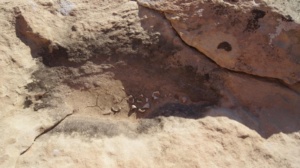
How did they get there?
Has not that rock moved for millions of years when it was under water and harbor these creatures? Looking at the place it seems unlikely since the rocks look that they just fall yesterday.
Someone or something bring them here? But from where and why? We have spent 8x2x2 crew hours on this area investigating the place. No one found other fossilized sea shells around.
The mystery remains…
Crew Photos – November 8th

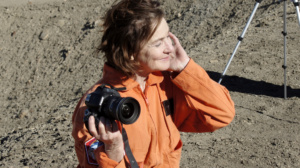
Annalea
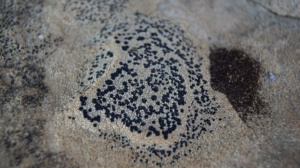
Lichen
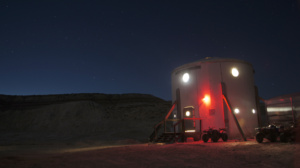
Night beauty
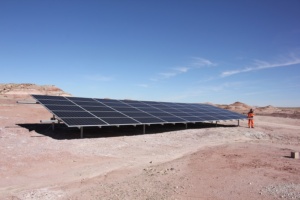
Solar energy on Mars.
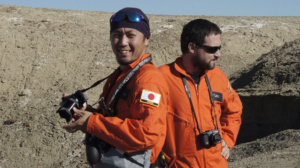
Yusuke and Claude-Michel
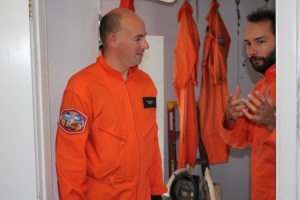
Guest from uk space agency.
Crew Photos – November 7th
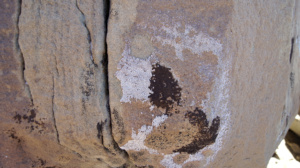
Variety of lichens.

Jon at geology scouting.
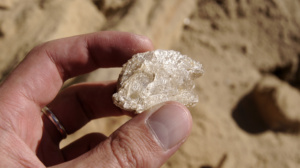
Gypsum
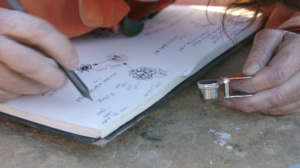
Field Drawing
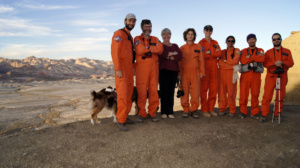
Crew 160 on twin EVA experiment.
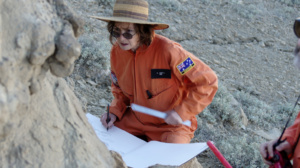
Annalea and field drawing

Lichens
Picture of the Day – November 8th
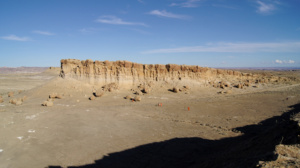
Science Post – November 8th
The Science Dome
Jon Clarke

The science dome
One of the newest additions to the growing MDRS complex is the science dome. It is a 3/5th spherical geodetic structure with the spaces filled by fly wood and coated inside and out by closed-cell foam. The dome is connected to the other station modules by a semi-enclosed tunnel. From it front it reminds me of the crew module of the spaceship Discovery in the film 2001: A Space Odyssey. Yesterday the door was finally hung and we started cleaning and moving equipment and furniture into it.

Door to science dome.
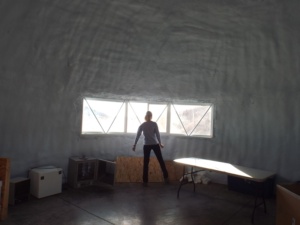
So much room!
The dome also houses the controls to, and batteries for the solar array that will soon power the station. When fitted out we expect the dome will look amazing inside. We have a lot of work still to do, but are looking forward to be able to work in our new space and to found new and additional uses for it.

Anastasiya and Anushree cleaning and unpacking the science dome.
Sol Summary – November 8th
Person filling out report: Annalea Beattie
Summary Title:
A Short EVA with a Fantastic Geological Tool, SPLIT, and Cleaning the Lab Day.
Mission Status: On track
Sol Activity Summary:
Today was a scheduled visit from our neighbours from the U.K. Rover Field Trials. UK Commander Mike Curtis-Rouse, our Commander Alex Mangeot and geologist Jon Clarke all suited up. In the vicinity of the hab, Alex trialed his space suit interface with positive results and found his way point using the SSUIt GPS, although it did register forty-one degrees inside the suit.
John Holt from Leicester University brought over the percussive geologist hammer SPLITT which is a rover platform instrument that cleaves rocks with very little effort, using only 1- 3 watts. Our geologist Jon Clarke gave it a trial run in the field.
This afternoon we cleaned up, now reports and cooking green Thai Curry.
Yes, early bed again, no one stays up, not even me.
MDRS lessons:
1. Dust is bad for your skin.
2. It’s possible to screw through a metal door with a hand held screw driver.
Plans: EVA to trial SPLIT in the field plus lichen sampling.
Crew Physical Status: Excellent shape, just look at us.
Weather: Warm with a blue blue sky and pink sunset.
Anomaly:
1. For the second day in a row the internet has dropped again from a 1000 to 500 mb. with no explanation.


